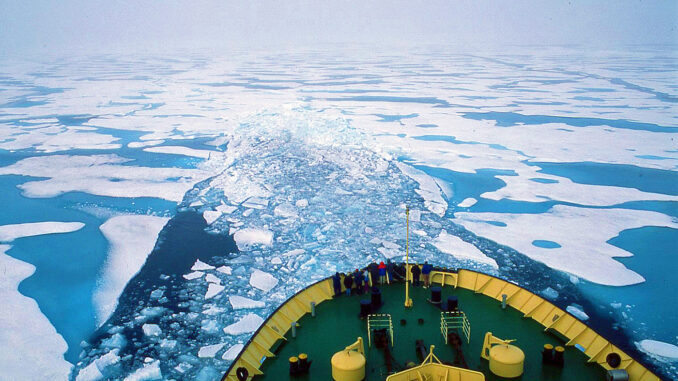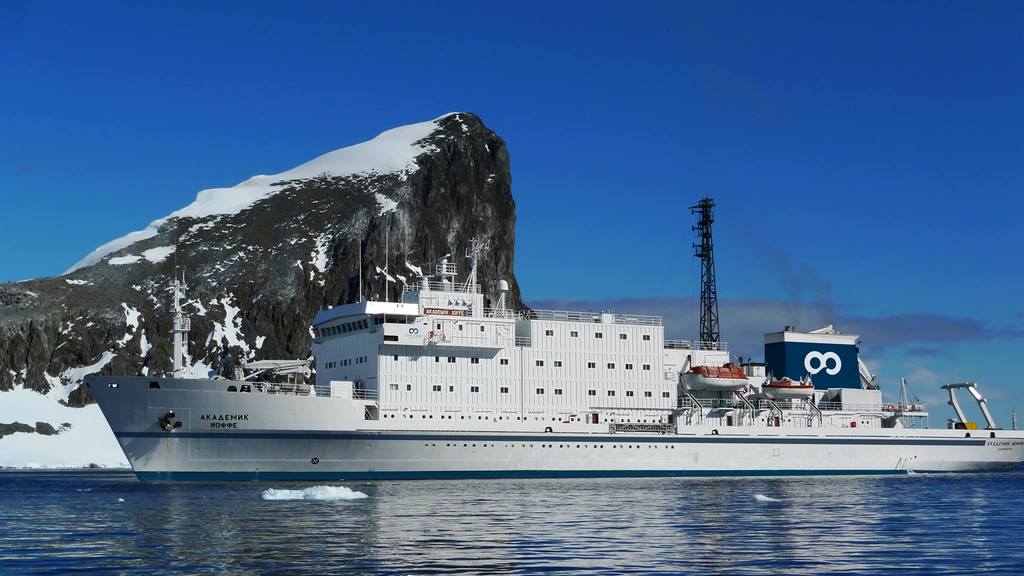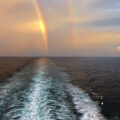
Cruising in Canada’s Arctic may be off limits this year, but many ships are aiming at exploring the north as soon as the federal ban is lifted in 2022. Now regulators are warning much stricter rules are needed to protect both the vulnerable environment as well as guests before northern waters reopen to cruising.
In its investigation report on the 2018 grounding of the passenger vessel Akademik Ioffe, the Transportation Safety Board of Canada (TSB) determined that because there are unique risks associated with operating in the Canadian Arctic, stronger mandatory rules and better charts need to be developed immediately.
On August 24, 2018, the chartered Russian research ship with 102 passengers and 61 crew and expedition members on board, ran aground near the Astronomical Society Islands, 78 nautical miles north-northwest of Kugaaruk, Nunavut. Multiple search and rescue assets from both the Canadian Armed Forces and Canadian Coast Guard had to assist the distressed vessel, the report says.
The vessel self-refloated with a rising tide later that day, and passengers were evacuated and transferred to another passenger vessel the next day. No injuries were reported. But the vessel sustained serious damage to its hull: two ballast water tanks and two fuel oil bunker tanks were breached and took on water. Approximately 81 litres of the vessel’s fuel oil were released in the environment.

The investigation determined that the Akademik Ioffe was sailing through narrows in a remote area of the Canadian Arctic where none of the vessel crew had ever been, and which was not surveyed to modern hydrographic standards.
The navigation charts for the area did not show any shoals or other navigational hazards, but there was a note to mariners indicating that the information used to establish water depths was not official for navigation. In that case, additional precautions were called for, but the ship did not implement any additional precautions or add extra personnel to the watch, the investigation found.
“Consequently, with the officer of the watch multi-tasking, and the helmsman busy steering the vessel, the steady decrease of the under-keel water depth went unnoticed for more than four minutes because the echo sounders’ low water depth alarms had been turned off,” it discovered.
The investigation also found that passenger safety operations did not meet some of the International Convention for the Safety of Life at Sea requirements. For example, safety briefings were carried out more than 12 hours following the vessel’s departure, while the requirements mandate newly embarked passengers must undergo safety briefings and musters before or immediately upon vessel departure.
Additionally, expedition staff were informally tasked to coordinate passenger safety during the voyage, and provided the safety briefing to passengers on behalf of the vessel’s crew. The SOLAS Convention also requires that passenger vessels like the Akademik Ioffe have in place a decision support system to manage all foreseeable emergency situations that may occur on board. The investigation determined that there was no such emergency plan for the vessel touching bottom or running aground.

The investigation warned that “operating in the Canadian Arctic poses unique risks…. Given these risks, it is critical that operators of passenger-carrying vessels operating in the Canadian Arctic adopt additional mitigation strategies to address them.”
The TSB doesn’t assign fault or determine civil or criminal liability. After the 2010 grounding of the Clipper Adventurer near Kugluktuk, the TSB findings issued in 2012 determined the incident was the result of broken equipment and questionable decisions by its crew. The TSB also investigated an Aug. 29, 1996 grounding of the Hanseatic in Simpson Strait, which pierced two fuel tanks.
Maritime intelligence company Lloyd’s List confirmed concerns about the TSB report, saying that “with more than 85 per cent of Canadian Arctic waters having inadequate hydrographic data information, the likelihood of a similar occurrence involving passenger vessels engaged in adventure tourism is high.”
“When incidents do occur, the cold, vast, and sparsely populated region presents additional risks to passenger survivability. This is compounded by a lack of timely search and rescue response in the area. Given these risks and with passenger vessel traffic in the Arctic on the rise additional steps are needed,” Lloyd’s List said in a press statement.






1 Trackback / Pingback
Comments are closed.